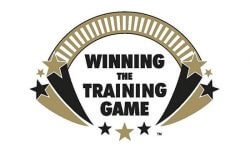
Our Gamification Methodology:
– Training that incorporates “gamification principles” gives participants experiential learning.
GAMIFICATION
gam·i·fi·ca·tion
[ˌɡāmifəˈkāSHən]
NOUN
Adding typical elements of game playing, such as point scoring, competition with others and rules of play to other areas of activity. Gamification commonly employs game design components which are used in non-game contexts in attempts to improve user engagement, information retention, organizational productivity, and learning. A review of research on gamification shows that an overwhelming majority of studies find positive effects from gamification.
The number one objective of Winning The Training Game is knowledge infusion (based on expert content), but differs from traditional learning methods by its delivery method, represented by three distinct characteristics:
The Team Environment
Players work in teams, which takes stress of answering tough questions from the equation. Novice and experienced participants share information and perspectives. An added benefit is increased bonding and camaraderie with other players.
The Game Format
The relaxed, fun venue lends itself to open minds that receive knowledge more readily. The competitive element naturally heightens the level and quality of responses. Players learn from the formal content, but also from peer insights.
An Open Discussion Forum
Retention rates dramatically increase, as participants discuss “real-life” scenarios. Problem solving and creativity is unleashed, as participants strive to uncover fresh approaches. As a communication vehicle, players realize they are not isolated, but face similar challenges, that together, they overcome.
